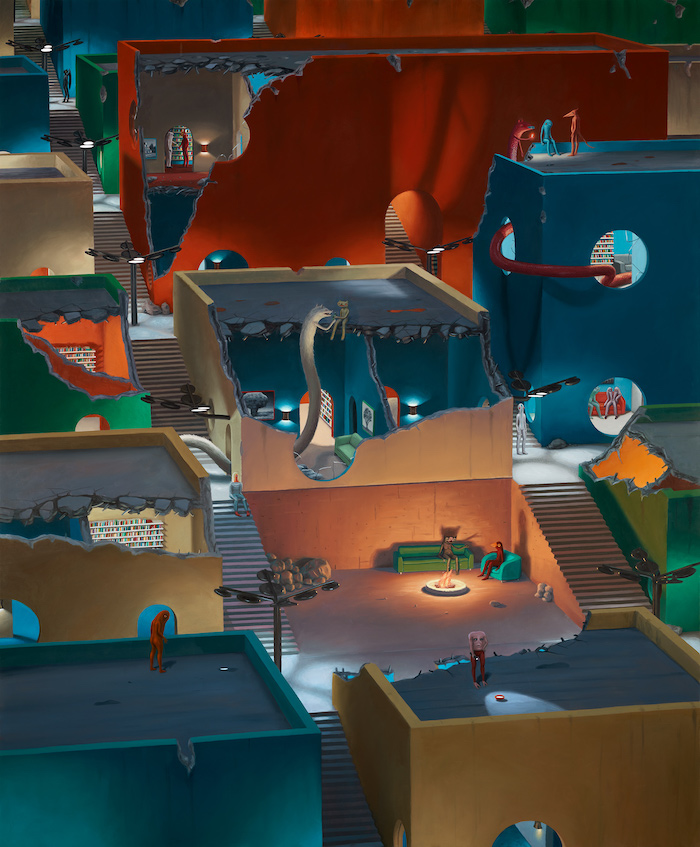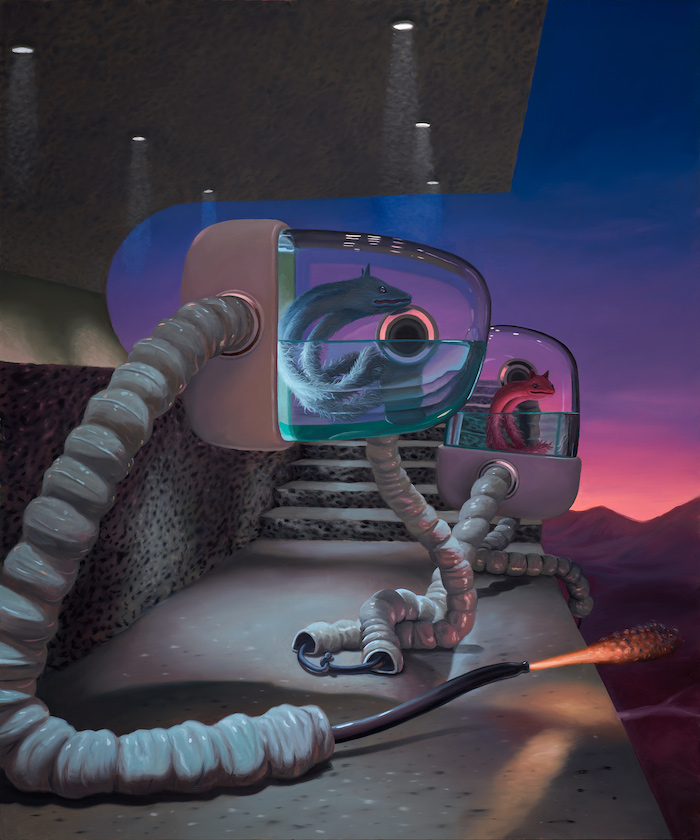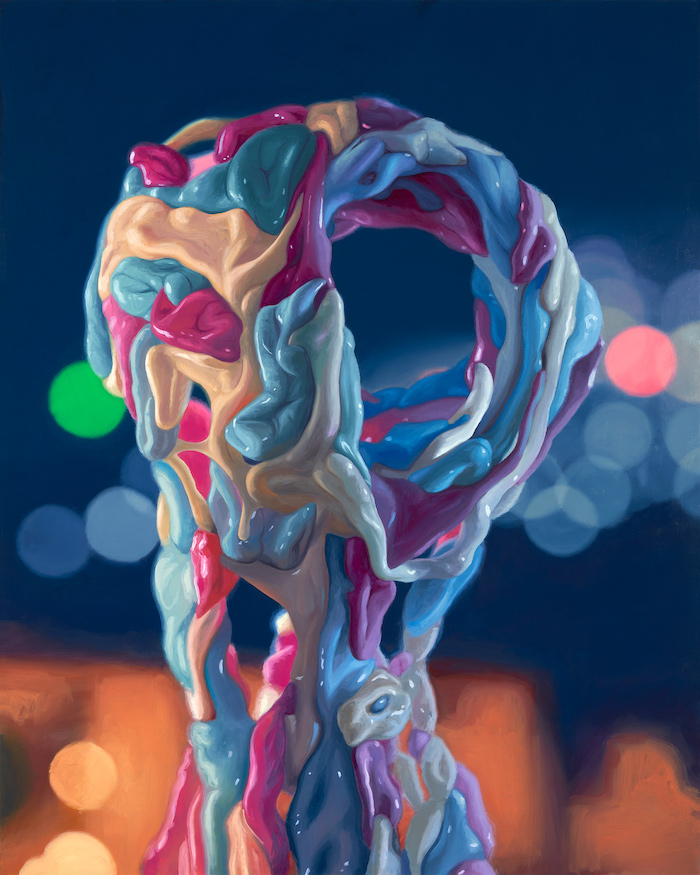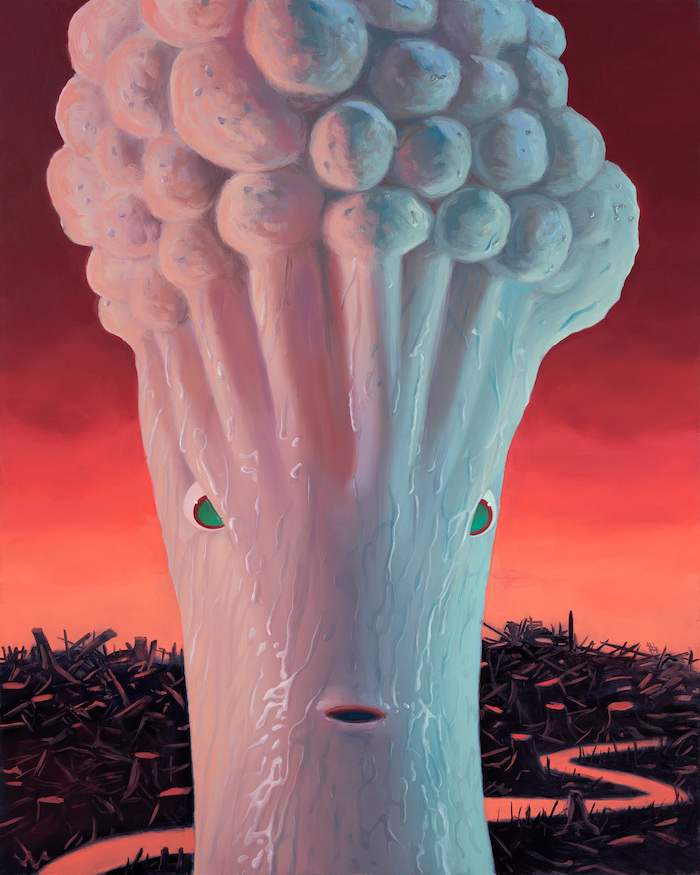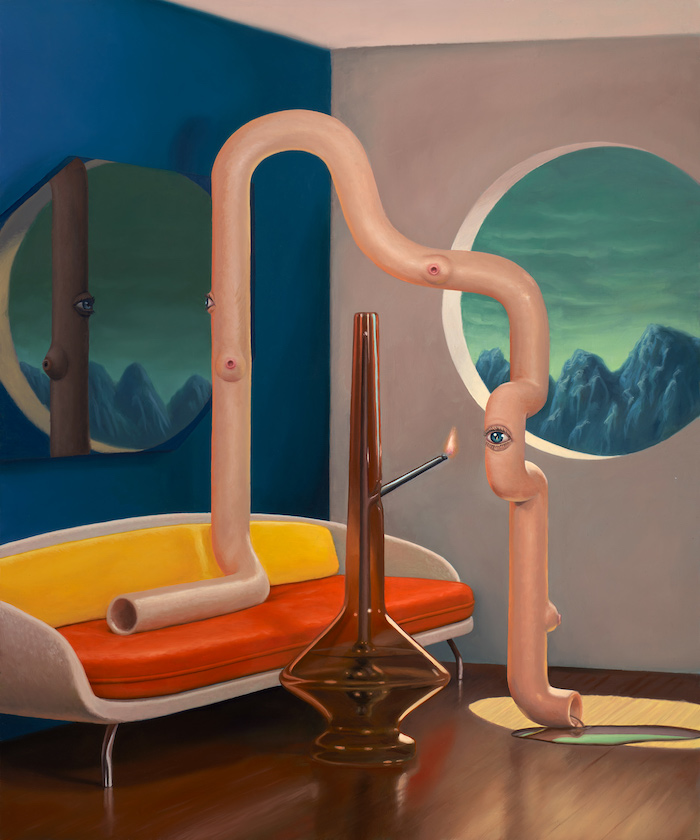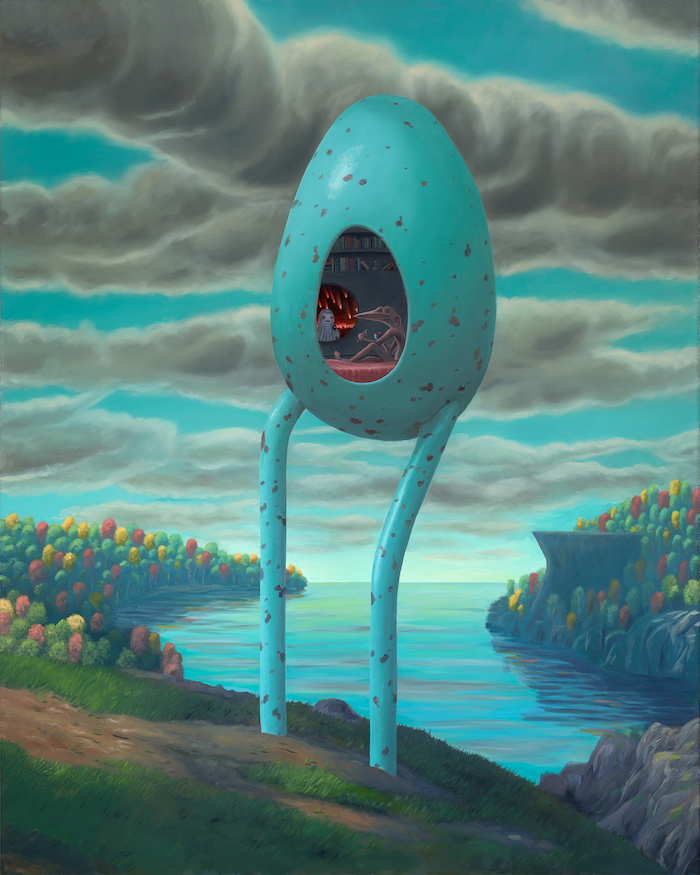The show must go on, and in that spirit, Unit London will kick off 2021 with a solo show by Jeremy Olson on January 6th. The Likes Of Others, his debut with the gallery encompasses a look at some of the darker aspects of the human condition; the deafening loneliness of a hyper-connected world and the anxiety of a canceled future.
Olson's colorful and meticulously rendered surreal and fantastical imagery captivates with an appealing, sometimes grotesque cast of anthropomorphic characters unburdened by limitations of the real world. Like beloved cartoon characters, they carry on amidst the everyday mundane tribulations to which we all relate. Captivated by technology, we wander and wonder. Do these bubble-gum colored rabbit holes ensnare or enlighten?By employing a variety of compositions and concepts, abstractions and illustration, he offers surprise and depth. Olson’s clever combination of delicious and despiable intrigues us, so we had to get in touch. 
Sasha Bogojev: What is your intention in creating and depicting such unusual imagery?
Jeremy Olson: These recent paintings feature anthropomorphic creatures and objects in mostly constructed environments. There’s often a reference to the natural landscape, but it’s either off in the distance or somehow violated. To me, they’re attempts to think about what it means, actually, to be human in our present moment of environmental devastation and failures of political imagination. They might be avatars for various desires or motivations thwarted. It wasn't entirely conscious but I think these ended up being obliquely about life in the pandemic, the isolation, and anxiety of it all.
The work varies in composition and format, from abstract composition to portraits and city or landscapes. How do you choose among such different methods to express your ideas?
I generally will have an idea for several similar paintings at once, but by the time I’ve worked one or two of them into anything interesting I’ve moved onto something else. Just in terms of mark-making, I don’t like to feel like I’m doing the same thing over and over. I definitely repeat myself in various ways, but in a sort of alternating fashion in hopes of avoiding boredom.
How difficult is it to render so much detail when you work with both close-ups and wide angle shots?
It helps for me to alternate approaches. Just in terms of time in the studio, a really zoomed-out painting with a lot of detail can take what feels like forever, so it’s nice to follow that up with something more focused and simple. I also think different approaches to scale operate like elements of pacing in a narrative when viewed together in a show or a body of work. In terms of the rendering, I’m quite controlled instinctively, yet I feel like I could always take it further. I guess I’m a half-perfectionist, so the only thing that prevents me from working these to death is the desire to move on to the next one.
How do you achieve the interplay of light and surfaces in your work and what are the challenges you enjoy about making them?
One of the biggest pleasures of working with oil paint is its luminosity and ability to render the flesh and other surfaces. That feeling of two very disparate materials touching, or of light hitting something just right can be a challenge to achieve, but a true joy when it works. It’s funny how often I realize I have no idea what something actually looks like when I try to draw or paint it. I look at a lot of photography and images online, and of course, also observe the world around me as much as possible.
How do the different characters emerge, and will they recur in your work, enjoying a bigger narrative?
The particular characters just come from a practice of drawing, loose sketching, and playing around with different figures. I don’t intentionally repeat them exactly, but types definitely recur. I love drawing and painting birds or bird-people for whatever reason, and I’ve recently been into plant-based figures. Because the architectural or furniture/mechanical elements are very structural, the figures or beings are a chance to loosen up just a little.
I generally think of each painting as discrete and having its own internal logic or narrative. They are all part of the same universe, and I suppose there is an element of world-building to the larger body of work;at least for now, though there isn’t an overarching story. 
What type of visuals do you use as reference for designing your characters?
In the broadest sense I’m looking at everything from the history of painting, with a particular focus on surrealism; to many, many artists working currently; to some children’s book illustration, to science-fiction cinema and contemporary animation. I’m fairly promiscuous in terms of interests and references. But again, for the characters, they end up looking a certain way just from my own drawing practice and habits I’ve developed over time. For several years I was making essentially photo-realist paintings, but my sketchbooks were still full of bird-people. In terms of the actual painting part, I’ve gone back and forth over the years in terms of working directly from reference material. Just recently I’ve started using 3d software (blender) to build and light some of the environments, which has allowed me to increase the complexity of the scenes I’m creating.
Are there particular emotions you hope to evoke with these images?
There’s always a feeling or a certain sense of place I’m trying to articulate, an emotional tenor. It’s hard to explain but I sort of sense when it’s working, at least as far as my own subjective response. An idea I keep returning to is this tension between empathy and alienation. I think these beings oscillate between feeling very relatable and very other, sometimes even threatening. It’s related to my own inner ambivalence and struggles with finding meaning in the world, in life. I think that ultimately, as an artist, you’re trying to communicate something outside of language, something otherwise ineffable. You hope other people can get it, or feel it too, but it’s impossible to ever know for sure.
See Jeremys' print for Unit London here.

